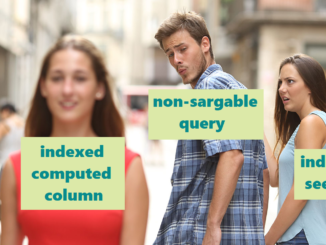
Making non-SARGable queries seek, without changing the query
We’ve all been there. You’ve got a query where the JOIN or WHERE predicate is not SARGable. You’ve read about how this can be a problem, and how bad it is for performance. Alas, you cannot change the query. Sometimes this reason is political, sometimes … [Read More]



